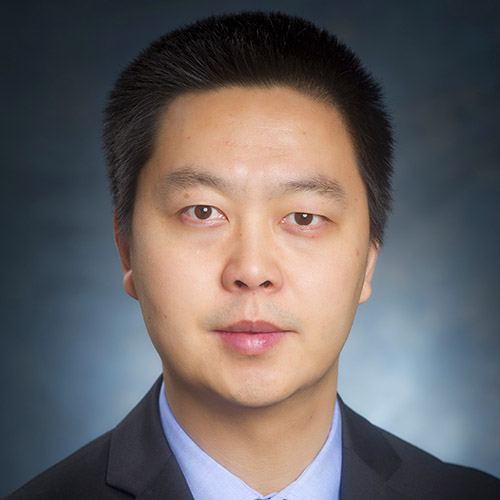![]()
 Zechen Chong, Ph.D.Zechen Chong, Ph.D., assistant professor in the Department of Genetics, is the latest winner of the Heersink School of Medicine’s Featured Discovery. This initiative celebrates important research from Heersink faculty members.
Zechen Chong, Ph.D.Zechen Chong, Ph.D., assistant professor in the Department of Genetics, is the latest winner of the Heersink School of Medicine’s Featured Discovery. This initiative celebrates important research from Heersink faculty members.
Chong’s study, “Deciphering the exact breakpoints of structural variations using long sequencing reads with DeBreak,” was recently published in Nature Communications.
UAB researchers have developed a novel computational tool called DeBreak, which significantly enhances the detection of structural variations (SVs) in DNA using long-read sequencing data.
“Structural variations represent large-scale alterations in the DNA sequence, including deletions, duplications, inversions, copy-number variants, insertions, translocations, and other complex forms,” said Chong. “These variations can impact gene function and contribute to numerous genetic disorders, cancers, and other health conditions.”
Traditional short-read sequencing methods struggle to accurately detect these variations due to the sizes of SVs and the presence of repetitive sequences. Long-read sequencing can overcome these issues with its extended read lengths. However, existing SV callers for long-read sequencing data exhibit limited sensitivity and precision.
“To address this, we developed DeBreak, which improves both sensitivity and precision, offering a more comprehensive understanding of the role of SVs in natural populations and human disease,” said Chong. “This innovative tool can help scientists study population genetics and the genetic basis of diseases more effectively, potentially leading to improved diagnosis, management, and treatment options.”
The Heersink communications staff sat down with Dr. Chong to gain insight into this study, UAB, and the science community.
Q: What compelled you to pursue this research?
I pursued this research because I recognized the limitations of existing computational tools for SV detection using long reads. The sensitivity and precision of these methods needed improvement to better understand the contribution of SVs to genetic diversity, species divergence, and various diseases. Additionally, I believe that a more comprehensive and accurate tool for SV discovery could pave the way for new insights into genetic disorders and other phenotypic traits, ultimately benefiting both the scientific community and the broader society.
Q: How do you feel your research will impact the science community?
Our research will significantly impact the scientific community by providing a more accurate and comprehensive tool for SV discovery. DeBreak's improved sensitivity and precision will enable researchers to study genetic variations more effectively, allowing for a more detailed characterization of genetic diversity, species divergence, and the role of SVs in genetic disorders and other phenotypic traits. Furthermore, DeBreak's applicability to different long-read sequencing platforms, including PacBio and Oxford Nanopore, will make it a versatile tool for various research projects, further expanding its potential impact.
Q: What is your research’s relevance to human disease?
Our research is highly relevant to human disease, as SVs play a pathogenic role in a wide range of genetic disorders. DeBreak can be used to analyze cancer genomes for potentially tumor-driving SVs, providing valuable information for personalized cancer treatments and improving patient outcomes. Furthermore, DeBreak's comprehensive SV discovery capabilities can help identify the genetic causes of various rare diseases, leading to better diagnosis, management, and potentially new therapeutic approaches. Ultimately, our research has the potential to contribute significantly to the understanding and treatment of various human diseases.
Q: How has being at UAB and living in Birmingham affected your research?
Being at UAB and living in Birmingham has provided me with a supportive research environment and access to cutting-edge resources, such as high-performance computing facilities and an interdisciplinary network of collaborators. The university's commitment to fostering innovation and collaboration has been instrumental in developing DeBreak and its successful application in SV discovery. Living in Birmingham has also allowed me to enjoy a vibrant and diverse community, which has positively influenced my personal and professional growth.
Q: What do you find makes the science community here unique?
The science community at UAB is unique because of its interdisciplinary approach, fostering collaborations between researchers from diverse fields, such as genetics, bioinformatics, and other basic and clinical research. For example, Drs. Mick Edmonds and Xinyang Zhao offered experimental validation of our discovered novel SVs. This team effort enables the development of innovative solutions like DeBreak, which can significantly impact our understanding of genetics and human health. Moreover, UAB's commitment to excellence in research and its supportive environment creates opportunities for researchers to thrive, leading to groundbreaking discoveries and advancements in various scientific disciplines.